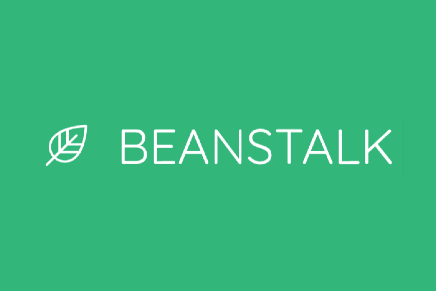Between 2002 and 2011, the government announced a scheme to help children start saving for their future with a Child Trust Fund. UK citizens could open these easily and build a valuable nest egg for their loved ones’ futures.
Now that these funds are finally maturing, you may be wondering if you have your own hidden pot of gold.
In this guide, you can find out everything you need to know about Child Trust Funds, including how they work, the benefits they offer, and how to track down lost accounts.
Beanstalk
- Beanstalk will handle your CTF switch to their Junior ISA
- The Beanstalk app makes saving for you and your kids simple
- Join the thousands of families already saving with Beanstalk
Capital at risk. As with all investments the value can go down as well as up.
What is a Child Trust Fund?
A Child Trust Fund (CTF) is a long-term tax-free savings account for children. This government scheme was designed to encourage children to become savers for the future.
CTF accounts were available to all children born in the UK between 1 September 2002 and 2 January 2011 whose parents received Child Benefit.
Since the scheme is now closed, you cannot open new CTF accounts but you can keep any existing ones that you may hold.
The first CTFs matured in September 2020, when the oldest children who own these accounts turned 18, while the last ones will finally mature in 2029.
- What is a Child Trust Fund?
- What are the benefits of a Child Trust Fund?
- How does a Child Trust Fund work?
- What types of Child Trust Fund are there?
- Can you transfer a Child Trust Fund into a Junior ISA?
- How many people have a Child Trust Fund?
- If I’ve lost my Child Trust Fund, can I get it back?
- How can I find a lost Child Trust Fund?
- How could financial advice benefit me?
- Child trust fund FAQs
Alternative to child trust fund
A simple alternative to a CTF is a Junior ISA which can save more money over time, compared to a cash CTF, for example.

What are the benefits of a Child Trust Fund?
The main benefit of using a CTF is that any returns are tax-free, including interest payments and capital gains. This is useful as it helps the money in the account to grow tax-efficiently.
When the CTF account matures, it can either be cashed in, or transferred to an adult ISA.
If you choose to keep it invested in this way, there are a variety of ISAs to choose from. If you want to be able to make an informed decision when choosing, you may want to read our previous guide to find the best Stocks and Shares ISA for you.
How does a Child Trust Fund work?
When CTFs first became available, HMRC sent the parents of qualifying children a voucher for £250, or £500 if they were a low-income household, which they could use to set up a trust fund in their child’s name.
Each year, the child, their parents, or other family members can contribute up to £9,000 on the child’s behalf into the CTF. This year starts on the child’s birthday and ends the day before their next birthday.
Any money in the account belongs to the child, and they cannot access it until they turn 18. However, when they turn 16, they can legally take over the responsibility for it and make decisions about the fund’s financial affairs.
What types of Child Trust Fund are there?
There are three main types of CTF that you may have:
Cash Child Trust Funds
This is exactly what it says on the tin, as it acts similarly to any other savings account with a bank or one of the many building societies, as you pay money into it in cash. The main benefit of saving in this way is that it allows your money to earn tax-free interest.
Stakeholder Child Trust Funds
With this account, your Child Trust Fund provider invests the money on your behalf. Typically, these Child Trust Funds have to pay a charge based on the total valuation of the fund, although it is capped at a maximum of 1.5% a year.
One of the main benefits of these accounts is that any growth is paid free from Capital Gains Tax.
If your parents received a starting payment voucher from HMRC to open a Child Trust Fund account, but failed to do so within a year, the government may have opened one of these on your behalf.
Shares-based Child Trust Funds
With this type of account, your money will be invested in shares, although it’s important to note that all investments carry an element of risk and you won’t have the same level of protection as a stakeholder account.
These accounts also offer a degree of flexibility, as you can choose where to invest the money. For example, you may want to put it in an investment fund or even choose your own investments.
Of course, this potentially exposes you to significant risk if you aren’t able to make an informed decision with your money. This is why you may want to seek independent financial advice before investing it in this way.
Can you transfer a Child Trust Fund into a Junior ISA?
If you have a CTF then you can’t have a Junior ISA at the same time, although you can transfer it into one.
One reason you may want to change is that Junior ISAs typically offer greater choice and better value, such as higher interest rates on cash accounts or lower fund management charges.
Please bear in mind, however, that if you transfer a CTF to a Junior ISA then you can’t transfer back. This is why it’s important to be sure about your decision.
For example, switching your CTF to a Beanstalk JISA is very easy and simple to set up.
How many people have a Child Trust Fund?
As you might imagine, CTFs were a hugely popular savings vehicle due to their tax benefits. According to government figures, more than 6 million CTFs were opened between 2002 and 2011.
Now that the qualifying children are reaching the age where they can access their money, HMRC estimates that 55,000 CTFs mature each month.
If I’ve lost my Child Trust Fund, can I get it back?
If you think you may have a CTF but have lost track of it, there’s no need to worry. Over the years, huge numbers of CTFs have been lost, so there are systems in place that can help you.
If you have one and haven’t informed your Child Trust Fund provider about what you’d like to do with the money when it matures, it will be held in a “protected” account on your behalf until you get in contact with them. It’s also important to note that funds that are held in this way will still be tax-free.
How can I find a lost Child Trust Fund?
Even if you don’t know the provider of your Child Trust Fund account, getting in touch with HMRC through the online form on their website can help you. Please note that you may need your National Insurance number to find this.
This form tells HMRC where your account was originally opened, which is the first step to tracking it down. You’ll also need a Government Gateway user ID and password, as well as your National Insurance number. If you don’t already have one, you can use the online form to create one.
When the government has found your Child Trust Fund account, they will send you the details of your account provider through the post. Typically, this happens within three weeks of making a request about lost Child Trust Funds through their site.
How could financial advice benefit me?
Whether you have a CTF that has just matured, or you are managing an account on behalf of a child, seeking independent financial advice can benefit you. An advisor may work with you to choose suitable investments, or help you decide what to do with the money once the account is mature.
Child trust fund FAQs
How much is a Child Trust Fund worth now?
What happens to a Child Trust Fund at 18?
Does everybody have a Child Trust Fund?
Please note
The value of your investment can go down as well as up and you may not get back the full amount you invested. Past performance is not a reliable indicator of future performance.
This article is for information only. Please do not act based on anything you might read in this article. All contents are based on our understanding of HMRC legislation, which is subject to change.
- Learn how to invest in the FTSE100
- Have you considered transferring your pension?
- Find the best trading platforms

